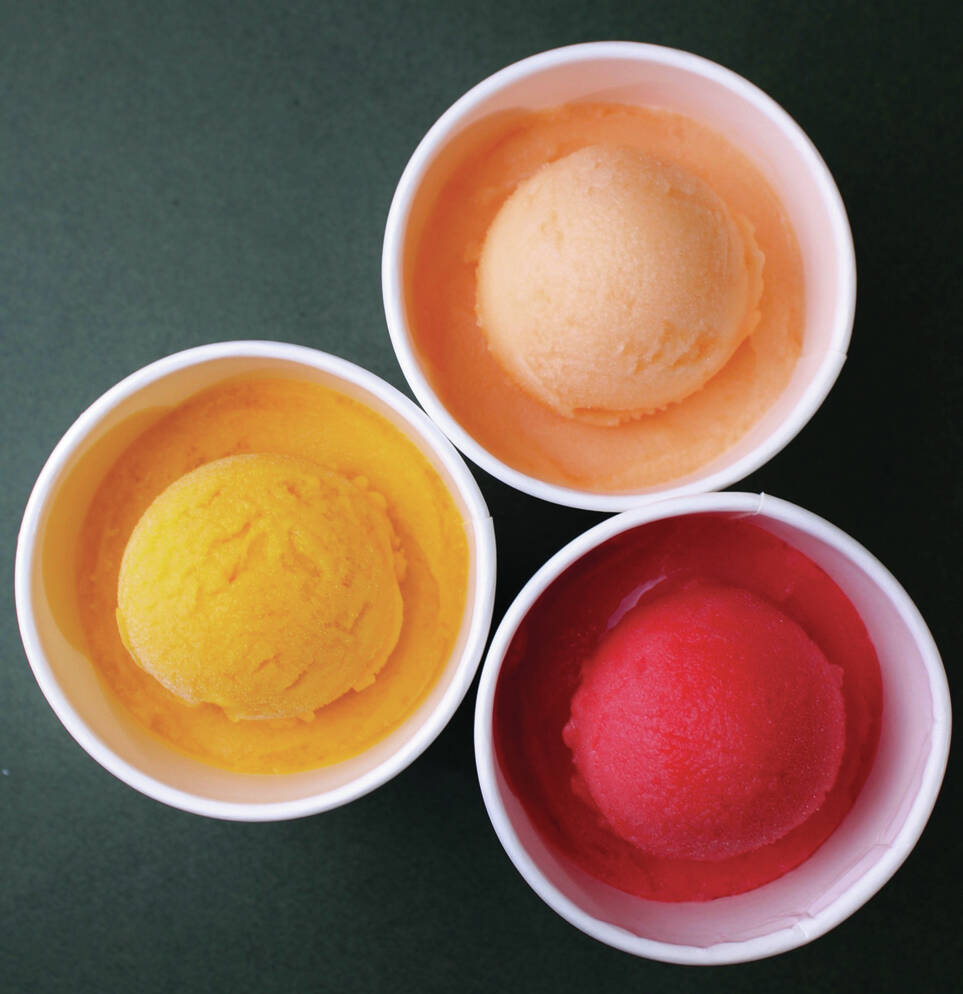 Pictured are melon, mango and watermelon Mexican ice cream. (Courtesy photo)
Pictured are melon, mango and watermelon Mexican ice cream. (Courtesy photo)July is National Ice Cream Month and I thought it would be fun to explore the history of these frozen treats. According to the U. S. Census Bureau, there are 442 ice cream and frozen dessert manufacturers in the United States. Texas has 27 frozen dessert manufacturers. In Pennsylvania, they celebrate an ice cream trail of their 42 creameries for tourists and locals to enjoy.
But, how did frozen treats begin?
About 500 BC, during the reign of Cyrus the Great in Persia (now Iran), sweetened ice was crushed and mixed with fruits, spices and flavors, called sharbat. (The word sherbet is derived from this Arabic word.) About 100 years later, thin rice noodles were added to the treat, providing starch, and this treat is still popular today. The noodles are soaked in saffron and rose water, lime and ice are added, and a sour cherry syrup tops off the dish called Faloodeh.
Travelers and royalty from Greece and Rome heard about these treats and began creating their own versions. In Europe between the 15th and 17th centuries ice treats became very popular. Marco Polo saw ice cream in China and brought their technology back to Italy.
China has a long history with frozen dessert. Stories are told about King Tang of Shang, who had 94 ice men who went into the mountains to gather snow that was crushed and flavored with fruits and spices (about 618 AD). Eventually, cooks began freezing rice and milk together to create a treat that was closer to today’s ice cream. China played a major part in the development of ice cream when they discovered salt could greatly lower the freezing point of ice to less than zero degrees Celsius. In Mexico, long before Europeans brought ice cream to North America, the Teotihuacanos made frozen treats by bringing snow from the Popocatepetl and Iztaccihuatl volcanoes. The snow was mixed with seasonal fruits, honey, and nuts and enjoyed by emperors and those in power, especially for ceremonies.
As refrigeration improved, stalls and shops opened across Mexico selling Nieves de agua, or Nieve de garrafas which translates to Ice and the metal container used in the process. Unlike the development of ice cream in the states, where a company makes the ice cream or sherbet and sends it to shops already frozen, a person at each Neveria (shop or stall) in Mexico takes a wooden spoon to crush the fruit in a garrafa that sits inside a larger wooden bucket holding the ice and salt. In this way, many more flavors were developed due to the fruit in season in each area. They even added corn to the ice mixture to make the final product creamier! Eventually, Italian immigrants brought their influence with recipes for gelatos, but the wide variety of fruits in Mexico makes for a unique product.
If you are interested in more on the history and how to make iced treats, Fany Gerson wrote “Mexican Ice Cream,” published in 2017, which includes more than 50 recipes for this treat.
Additionally, this Saturday, July 27, you can taste the flavors of Mexico and celebrate National Ice Cream Month in a special South Texas tradition from 8:30 to 11:30 a.m. at the Farmers Market at Firemen’s Park in McAllen, under the large, covered space in the park, next to Town Lake at 201 N. 1st St. This is a traditional farmers market selling locally grown produce, herbs, and seasonal fruits, mushrooms, and grass fed meats, as well as homemade jams, salsas and artisan baked goods. And Master Gardeners are on hand to answer your gardening questions at the Welcome Desk.
Barbara Storz is a local horticulturist writing about plants that grow well in south Texas. You can find her at the Farmers Market in Firemen’s Park and on Facebook.
The post National Ice Cream Month: Exploring the history appeared first on MyRGV.com.
 (2).png)
 1 month ago
52
1 month ago
52








 English (US)
English (US)